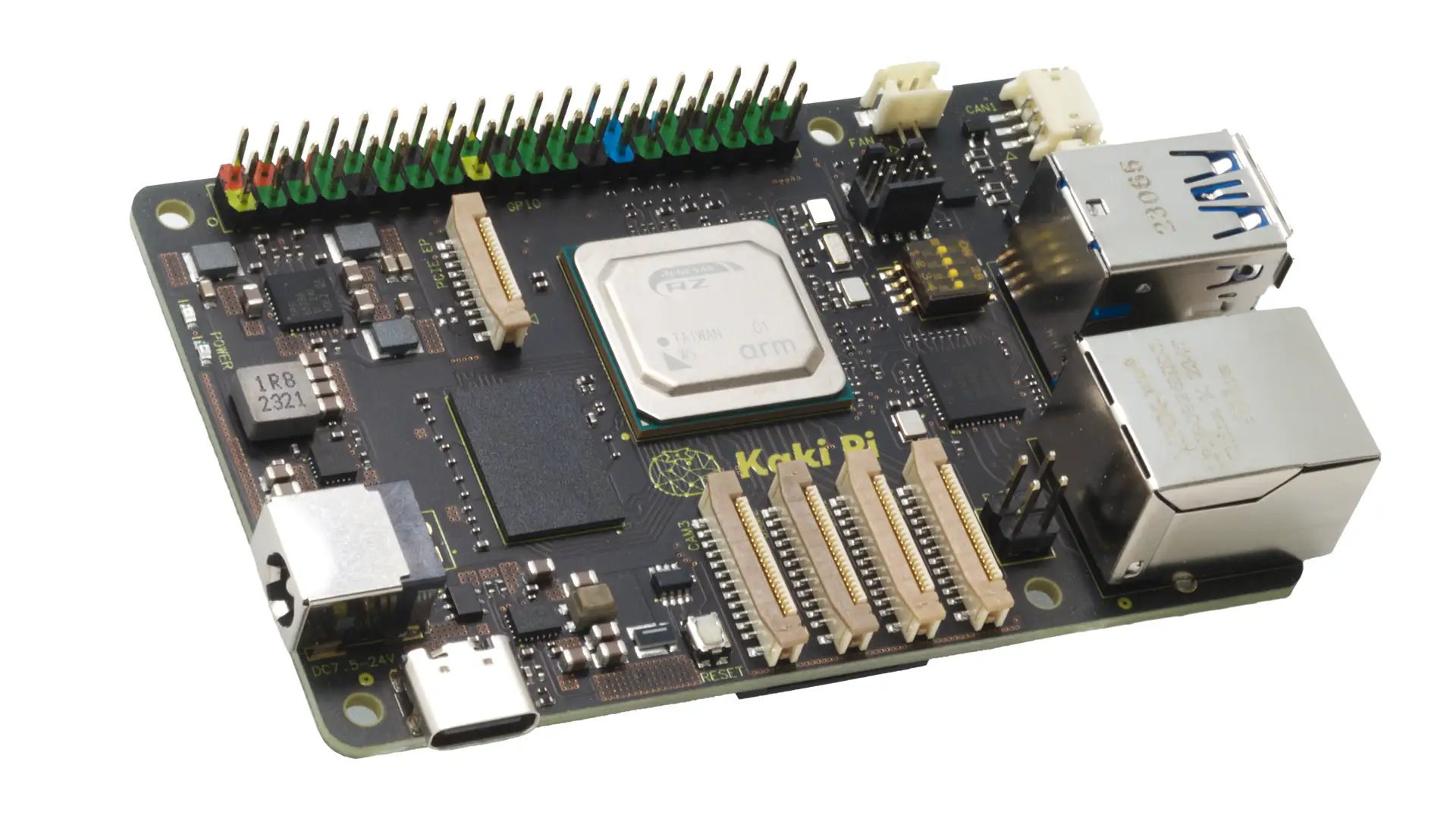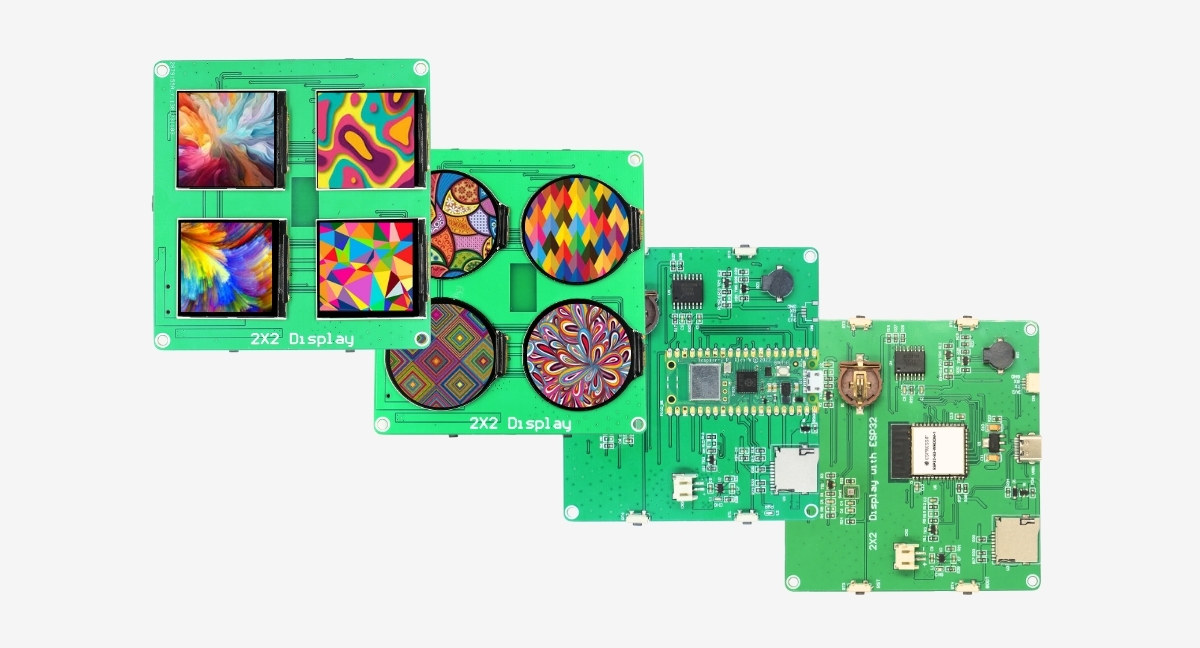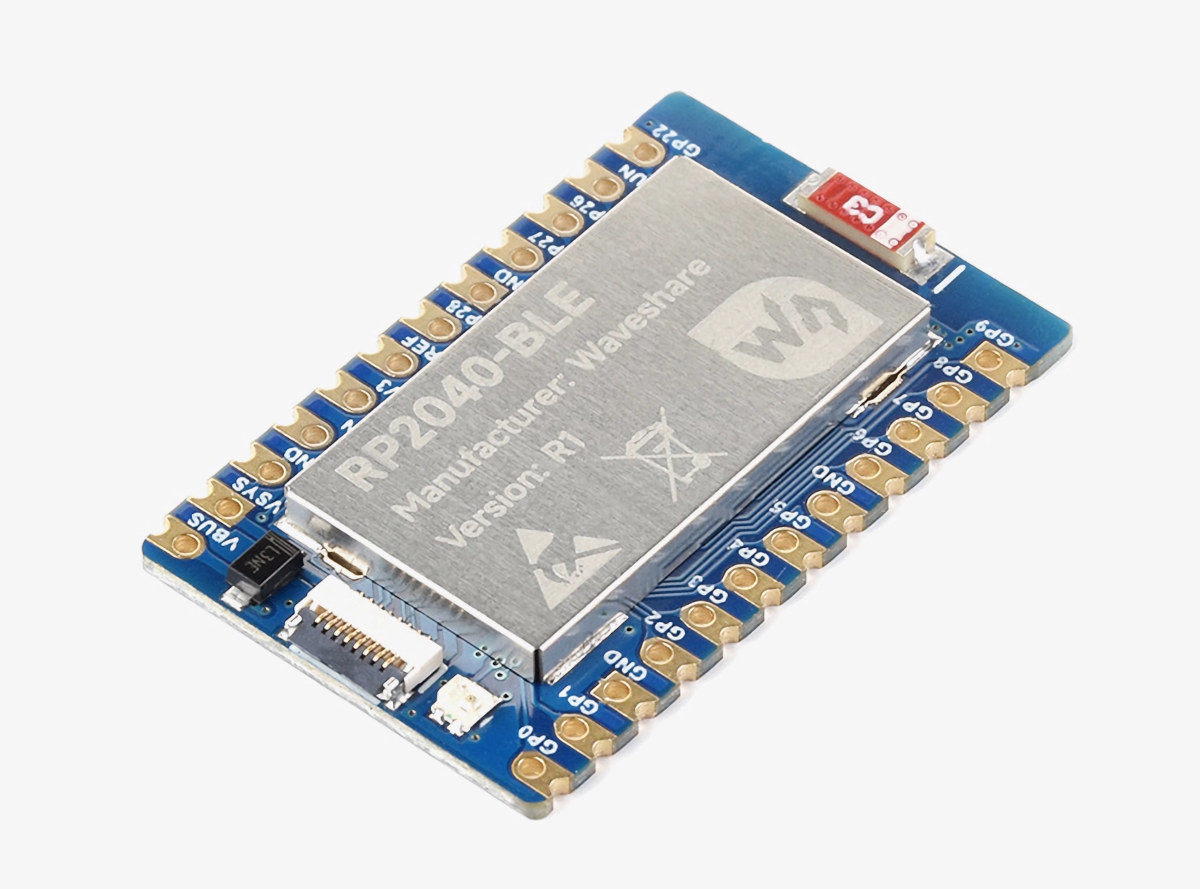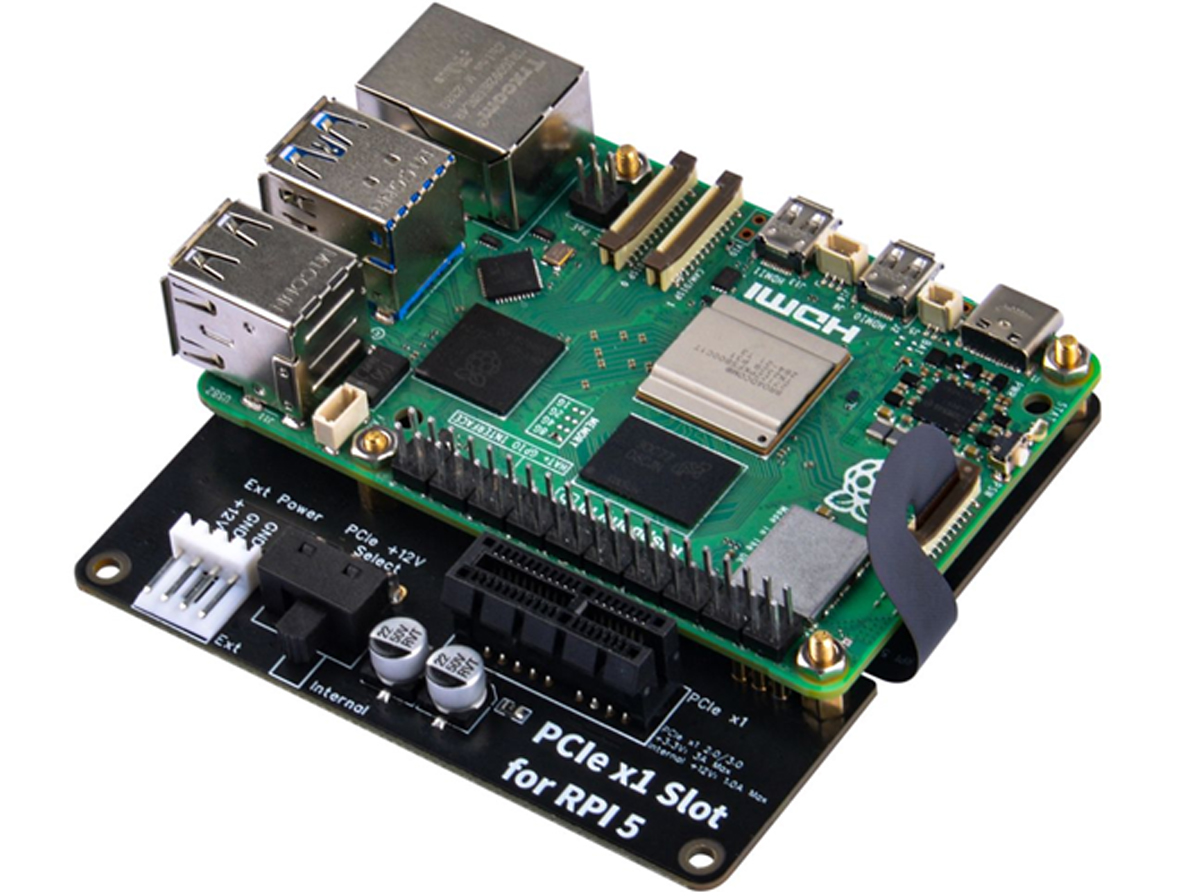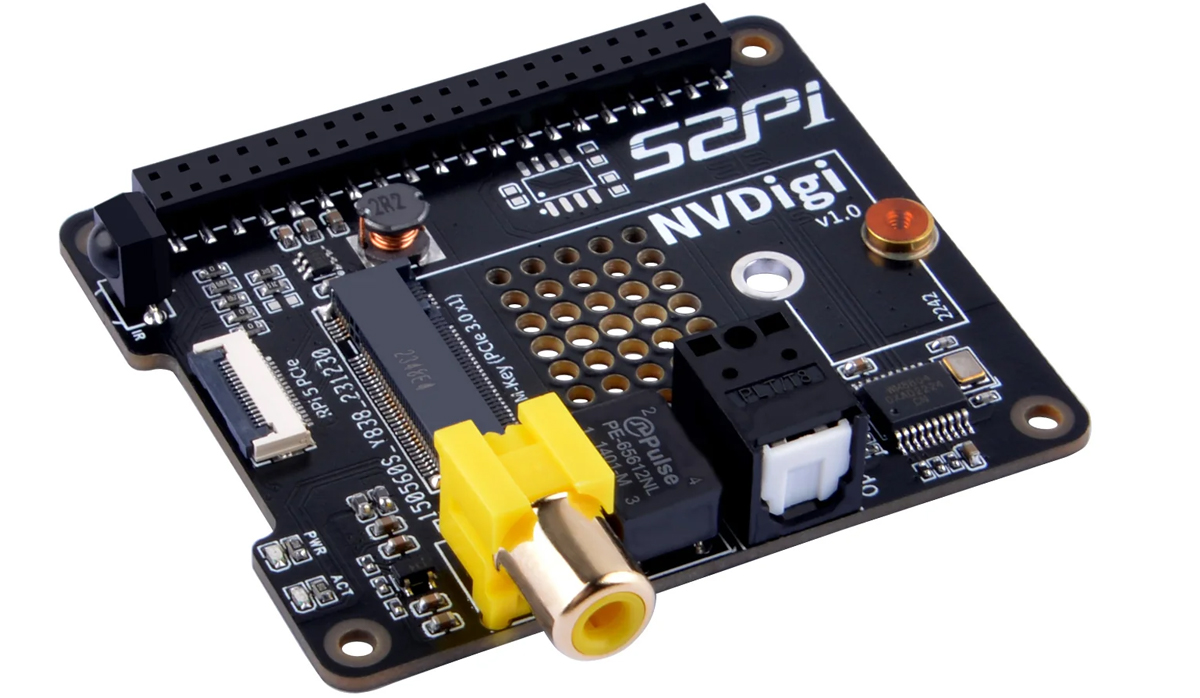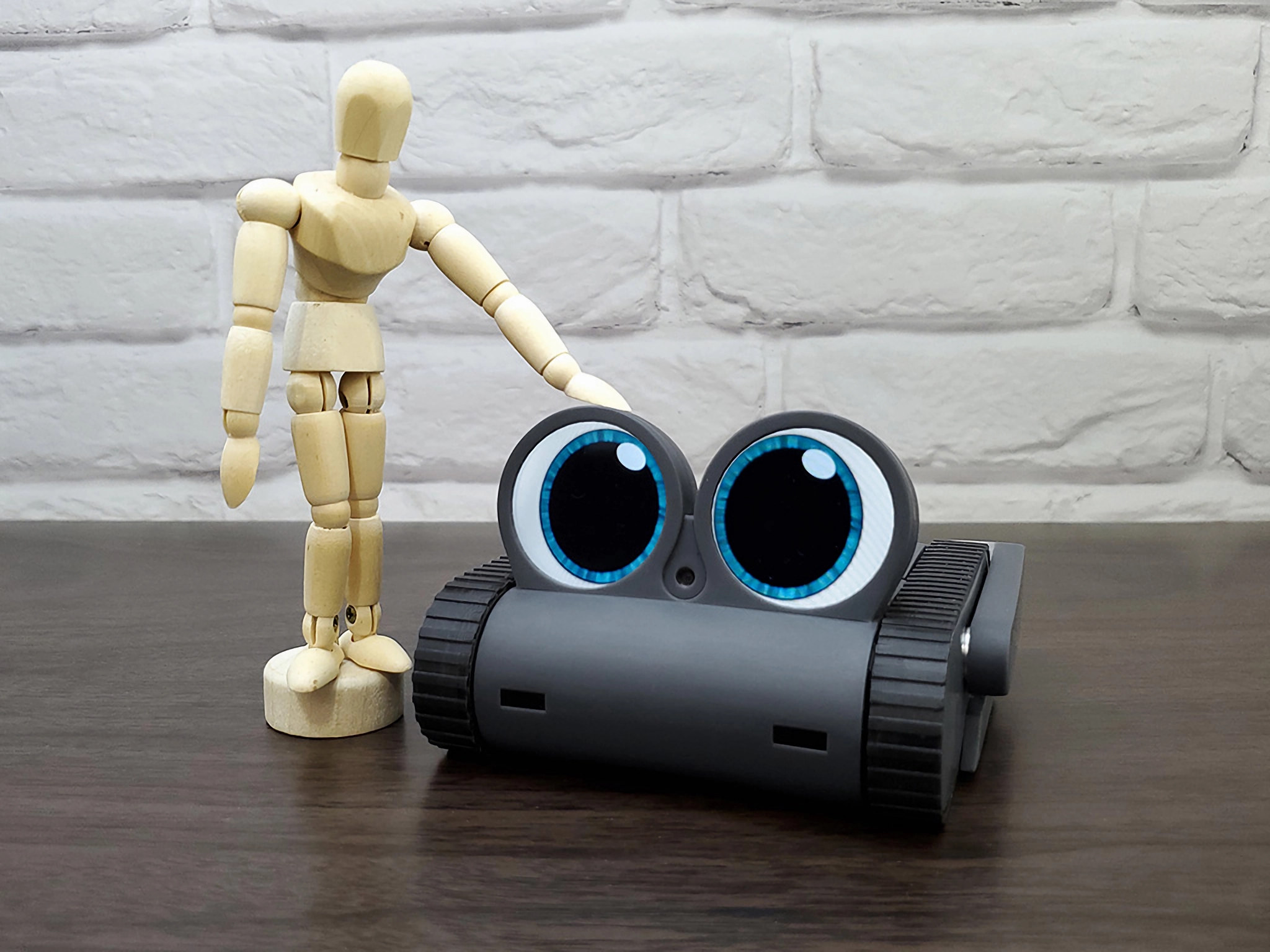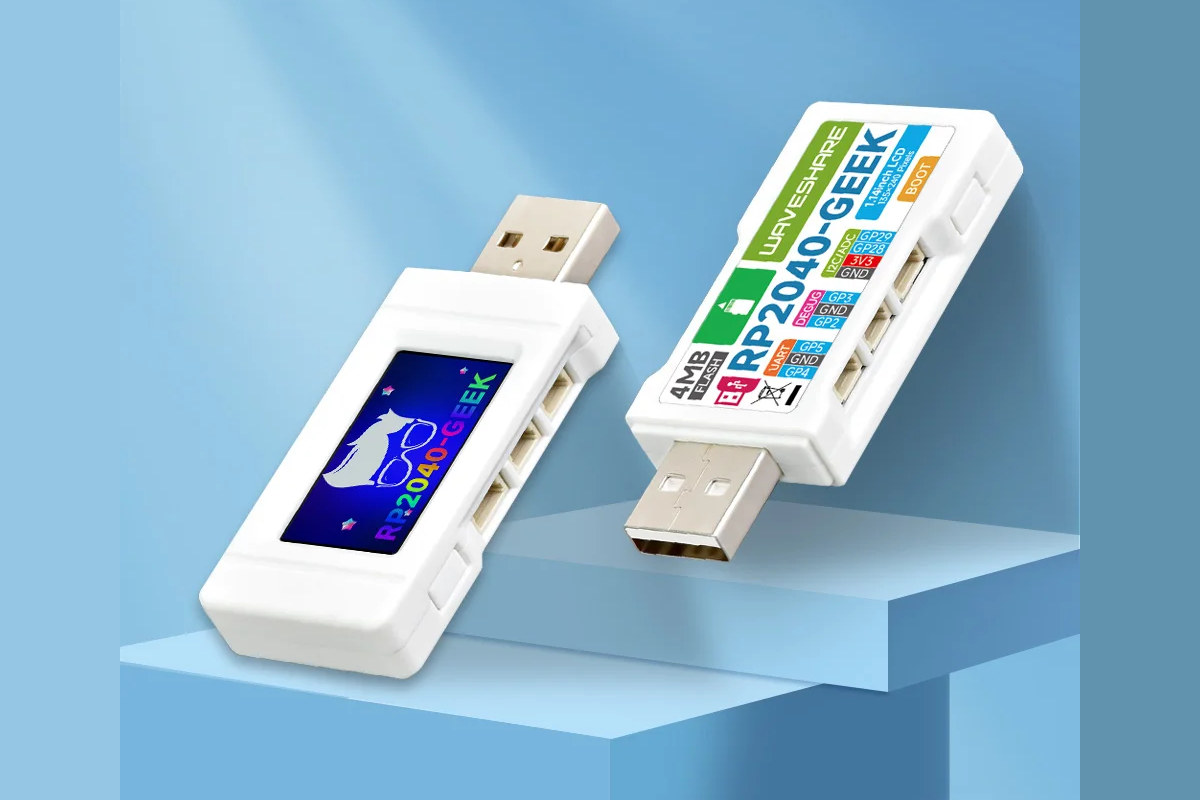Japanese company Yuridenki-Shokai Co. Ltd will soon launch the Kaki Pi single board computer [update Aug 2024: now called Kakip] based on the just-announced Renesas RZ/V2H Arm microprocessor with a powerful 80 TOPS AI accelerator, with Raspberry Pi-inspired form factor and features such as the 40-pin GPIO header, the same PCIe 3.0 connector as found in the Raspberry Pi 5, and four 22-pin MIPI CSI connectors that look to be compatible with the Raspberry Pi cameras. The board also comes with up to 8GB LPDDR4, a microSD card for the OS, a 22-pin MIPI DSI connector for a display, a gigabit Ethernet port, two USB 3.0 ports, two CAN Bus connectors, and other interfaces that make it suitable for robotics applications such as Autonomous Mobile Robots (AMR) and HSR (Human Support Robots) as well as IoT projects. Kaki Pi specifications: SoC – Renesas RZ/V2H CPU/MCU cores Quad-core Arm Cortex-A55 processor […]
2×2 Quad Display Board uses Raspberry Pi Pico W or ESP32-S3-WROOM-1 module to drive four displays (Crowdfunding)
SB Components’ 2×2 Quad Display Board is an MCU development board fitted with either a Raspberry Pi Pico W board or an ESP32-S3-WROOM-1 module used to drive four small color displays in square or round shapes. The board specifically features either four 1.54-inch square TFT displays or four 1.28-inch round displays, a microSD card, an RTC with coin-cell battery holder, and a USB-C port for power and programming, plus a few buttons. It may feel like it’s coming out of the but-why-because-we-can department, but the company expects it to be used for signage, interactive displays, art projects, portable devices, data loggers, education, and more. 2×2 Quad Display Board specifications: Main control (one or the other) Raspberry Pi Pico W MCU – Raspberry Pi RP2040 dual-core Cortex-M0+ microcontroller @ 133 MHz with 264KB SRAM Storage – 2MB QSPI flash Wireless – WiFi 4 and Bluetooth LE 5.2 USB – 1x Micro […]
Embedded Open Source Summit 2024 schedule – Embedded Linux, Zephyr OS, and Real-time Linux
The Embedded Open Source Summit 2024 (EOSS 2024) will take place on April 16-18 and the Linux Foundation has already announced the schedule with conference sessions, lightning talks, and birds of a feather (BoF) sessions covering embedded Linux, Zephyr OS, and real-time (RT) Linux. While I won’t be attending in person, I still find it interesting to check out the schedule as we may learn more about the current status of embedded Linux. So I’ve created my own little virtual schedule out of the available talks. Tuesday, April 16 – Day 1, Embedded Open Source Summit 2024 9:05 – 9:45 – No, It’s (Still) Never Too Late to Upstream Your Legacy Linux-Based Platforms by Neil Armstrong, Linaro Nearly 7 years ago, Neil already spoke about this subject in Berlin, and it’s still very true. Do you maintain or used to maintain a Linux-based board or SoC off-tree? Then there are […]
Waveshare RP2040-BLE is a Raspberry Pi RP2040 module with Bluetooth LE connectivity
If you could not care less about WiFi, the Waveshare RP2040-BLE module combines a Raspberry Pi RP2040 microcontroller with an unnamed Bluetooth 5.1 dual-mode chip, and supports a USB-C add-on board useful during development. There are several Raspberry Pi RP2040 boards with a WiFi and Bluetooth module including the Raspberry Pi Pico W, but if you are only interested in using Bluetooth, the RP2040-BLE board from Waveshare may be more power-efficient and its design may be more suitable for integration into products. Waveshare RP2040-BLE specifications: MCU – Raspberry Pi RP2040 dual-core Arm Cortex M0+ microcontroller up to 133 MHz with 264KB of SRAM Storage – 2MB of onboard Flash memory. Connectivity Bluetooth 5.1 dual-mode function (BLE and classic) Controlled by serial AT commands Ceramic antenna Expansion 24x through and castellated holes with 14x multi-function GPIO pins. 2x SPI, 2x I2C, 2x UART, 3x 12-bit ADC, 14 x PWM FPC connector […]
52Pi P02 PCIe expansion board for Raspberry Pi 5 features a PCIe x1 slot
The 52Pi P02 is an expansion board for the Raspberry Pi 5 that converts the Pi’s PCIe into a PCIe x1 slot. The board gets connected to the bottom of the Pi and taps into the Pi’s power with the help of onboard pogo pins. It supports PCIe Gen2/Gen3 speeds and features a JST connector for external power input. While writing about the 52Pi NVdigi Expansion Board, I found the P02 PCIe expansion board for Raspberry Pi 5 interesting. It features a PCIe x1 slot, allowing you to install various off-the-shelf accessories like network cards, USB expansions, and more. You can even use a PCIe riser to connect a GPU with standard PC products. This isn’t the only 52Pi product we’ve covered; we’ve also looked at the 52Pi water cooling kit and the 52Pi CM4 Router Board. Feel free to check those out if you’re interested in the topic. 52Pi […]
52Pi NVdigi Expansion Board for Raspberry Pi 5 combines HiFiBerry Digi+ audio output with M.2 PCIe x1 slot
The 52Pi NVdigi is another PCIe expansion board for the Raspberry Pi 5 which integrates HiFiBerry Digi+ to provide high-quality S/PDIF output. It also features an M.2 PCIe x1 slot that supports NVMe 2242/2230 SSDs. Furthermore, it offers an optical output (TOSLink) and an RCA output for versatile audio connections. The HiFiBerry Digi+ is a high-quality S/PDIF output for the Raspberry Pi. It uses the I2S sound port that connects directly to the CPU without the need for an additional USB conversion. It supports sample rates up to 192kHz/24bit. 52Pi NVdigi Expansion Board Specification: HiFiBerry Digi+ Integration – Provides high-quality S/PDIF output for Raspberry Pi 5. Direct I2S Connection – Connects directly to the CPU via the I2S sound port for optimal audio. High-Resolution Audio – Supports sample rates up to 192kHz and 24-bit depth for immersive audio. Multiple Audio Outputs – Features both optical (TOSLink) and electrical (RCA) outputs. M.2 […]
Doly – A cute little autonomous AI-powered robot based on Raspberry Pi CM4 module (Crowdfunding)
Limitbit Doly is a cute little autonomous robot with two continuous tracks, two small arms controlled by servos, two round color displays acting as the eyes, and various sensors, all controlled by a Raspberry Pi CM4 system-on-module. The robot can be used for STEM (Science, Technology, Engineering, and Mathematics) education or as a developer platform. AI workloads can also run on the Raspberry Pi CM4 module taking sensors, camera, and microphone inputs, with the robot interacting with the user through the built-in stereo speaker and two eyes. In practice, that means Doly supports features such as face recognition and smart audio with the robot capable of recognizing its owner and responding to voice commands. Doly specifications: System-on-Module – Raspberry Pi CM4 Lite model CM4101000 (1GB RAM, Wireless) by default, but also supports other CM4/CM Lite modules with wireless Storage – MicroSD card slot Display – 2x high-resolution color displays (the […]
Waveshare RP2040-GEEK USB development board features RP2040 MCU, 1.14-inch color display, UART/I2C/SWD ports
Waveshare RP2040-GEEK is a development board that looks like a USB flash drive but is based on a Raspberry Pi RP2040 microcontroller with a 1.14-inch 65K color LCD and some expansion ports all housed in a white plastic case. The device comes with a 4MB flash to store the firmware, a microSD card slot for data storage, a BOOT button to enter bootloader mode, two 3-pin connectors for UART and SWD debug, and a 4-pin I2C port. Waveshare RP2040-GEEK specifications: MCU – Raspberry Pi RP2040 dual-core Arm Cortex-M0+ microcontroller clocked up to 133 MHz with 264 kB SRAM Storage – 4MB flash (W25Q32JVSSIQ) and microSD card slot Display – 1.14-inch 240×135 pixel 65K color IPS LCD display USB – 1x USB Type-A female port for power and programming Debugging – 3-pin SWD port for connecting a target board; the standard CMSIS-DAP interface can be used to debug most Arm-based microcontrollers; […]


